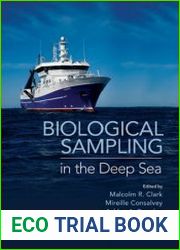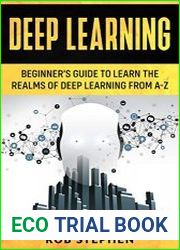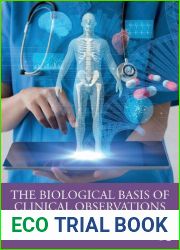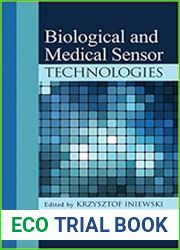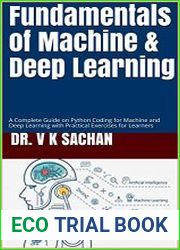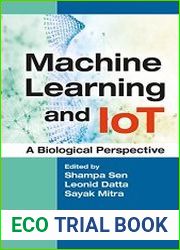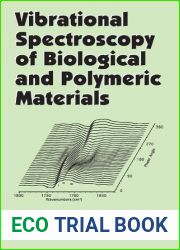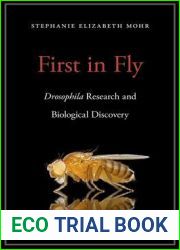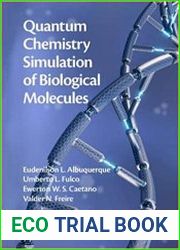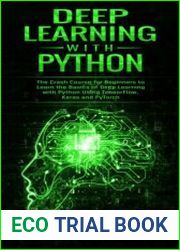
BOOKS - NATURAL SCIENCES - Biological Sampling in the Deep Sea

Biological Sampling in the Deep Sea
Author: Malcolm R. Clark, Mireille Consalvey, Ashley A. Rowden
Year: 2016
Pages: 472
Format: PDF
File size: 112,6 MB
Language: ENG

Year: 2016
Pages: 472
Format: PDF
File size: 112,6 MB
Language: ENG

The book provides a broad overview of the current state of knowledge on biological sampling in the deep sea, including the challenges and opportunities associated with this research area. Long Description of the Plot: In the vast and mysterious world of the deep sea, there exists a multitude of diverse and unique ecosystems that have captivated the imagination of scientists and explorers for centuries. However, studying these environments and the creatures that inhabit them poses significant challenges due to their remote location, extreme pressure, and lack of light. Biological Sampling in the Deep Sea offers a comprehensive guide to the various methods used to collect and analyze biological samples from the deep sea, providing readers with a thorough understanding of the technological advancements and innovations that have enabled us to explore and understand these ecosystems. The book begins by discussing the importance of biological sampling in the context of deep-sea research, highlighting the critical role it plays in advancing our knowledge of marine biodiversity, ecology, and evolution. It then delves into the various techniques used to collect samples from different habitats, such as the seafloor, water columns, and hydrothermal vents. Each chapter is authored by experts in their respective fields, offering insights into the latest methodologies and technologies employed in their research. One of the most significant challenges in deep-sea biological sampling is the difficulty of accessing and collecting samples from the depths of the ocean. The book addresses this challenge by detailing the development and application of advanced technologies such as remotely operated vehicles (ROVs), autonomous underwater vehicles (AUVs), and submersibles. These technologies have revolutionized the field by enabling researchers to collect samples from previously inaccessible areas and study the deep sea in unprecedented detail. The book also explores the challenges associated with preserving and analyzing deep-sea samples, including the need for specialized equipment and protocols to maintain sample integrity.
В книге представлен широкий обзор современного состояния знаний о биологическом отборе проб в глубоководной части моря, включая проблемы и возможности, связанные с этой областью исследований. Длинное описание сюжета: В огромном и загадочном мире морских глубин существует множество разнообразных и уникальных экосистем, которые на протяжении веков пленяли воображение ученых и исследователей. Однако изучение этих сред и обитающих в них существ создает значительные проблемы из-за их удаленного расположения, экстремального давления и отсутствия света. «Биологический отбор проб в глубоководном море» предлагает всеобъемлющее руководство по различным методам, используемым для сбора и анализа биологических образцов из глубоководного моря, предоставляя читателям полное понимание технологических достижений и инноваций, которые позволили нам исследовать и понимать эти экосистемы. Книга начинается с обсуждения важности биологического отбора проб в контексте глубоководных исследований, подчеркивая критическую роль, которую он играет в продвижении наших знаний о морском биоразнообразии, экологии и эволюции. Затем он углубляется в различные методы, используемые для сбора образцов из различных мест обитания, таких как морское дно, столбы воды и гидротермальные источники. Авторами каждой главы являются эксперты в своих областях, предлагающие понимание новейших методологий и технологий, используемых в их исследованиях. Одной из наиболее значительных проблем при глубоководном биологическом отборе проб является сложность доступа и сбора проб из глубин океана. Книга решает эту проблему, детализируя разработку и применение передовых технологий, таких как дистанционно управляемые аппараты (ROV), автономные подводные аппараты (AUV) и подводные аппараты. Эти технологии произвели революцию в этой области, позволив исследователям собирать образцы из ранее недоступных районов и изучать глубоководье в беспрецедентных деталях. В книге также рассматриваются проблемы, связанные с сохранением и анализом глубоководных образцов, включая необходимость в специализированном оборудовании и протоколах для поддержания целостности образцов.
livre présente un large aperçu de l'état actuel des connaissances sur l'échantillonnage biologique en haute mer, y compris les défis et les possibilités liés à ce domaine de recherche. Description longue de l'histoire : Dans le monde immense et mystérieux des profondeurs marines, il existe de nombreux écosystèmes variés et uniques qui, au fil des siècles, ont captivé l'imagination des scientifiques et des chercheurs. Cependant, l'étude de ces milieux et des êtres qui y vivent pose des problèmes considérables en raison de leur éloignement, de leur pression extrême et de leur manque de lumière. L'échantillonnage biologique en haute mer offre un guide complet sur les différentes méthodes utilisées pour collecter et analyser des échantillons biologiques en haute mer, ce qui permet aux lecteurs de comprendre pleinement les progrès technologiques et les innovations qui nous ont permis d'explorer et de comprendre ces écosystèmes. livre commence par une discussion sur l'importance de l'échantillonnage biologique dans le contexte de la recherche en eau profonde, soulignant le rôle crucial qu'il joue dans la promotion de nos connaissances sur la biodiversité marine, l'écologie et l'évolution. Il se penche ensuite sur les différentes méthodes utilisées pour prélever des échantillons dans différents habitats, tels que les fonds marins, les piliers d'eau et les sources hydrothermales. s auteurs de chaque chapitre sont des experts dans leurs domaines, offrant une compréhension des dernières méthodologies et technologies utilisées dans leurs recherches. L'un des problèmes les plus importants de l'échantillonnage biologique en haute mer est la difficulté d'accès et de collecte des échantillons des profondeurs de l'océan. livre aborde ce problème en détaillant le développement et l'application de technologies avancées telles que les appareils télécommandés (ROV), les véhicules sous-marins autonomes (AUV) et les véhicules sous-marins. Ces technologies ont révolutionné ce domaine en permettant aux chercheurs de prélever des échantillons dans des zones auparavant inaccessibles et d'étudier l'eau profonde dans des détails sans précédent. livre traite également des problèmes liés à la conservation et à l'analyse des échantillons d'eau profonde, y compris la nécessité de disposer d'équipements et de protocoles spécialisés pour maintenir l'intégrité des échantillons.
libro ofrece una visión general del estado actual de los conocimientos sobre el muestreo biológico en las profundidades del mar, incluidos los problemas y las oportunidades relacionados con este campo de investigación. Descripción larga de la trama: En el vasto y misterioso mundo de las profundidades marinas, hay muchos ecosistemas diversos y únicos que han cautivado la imaginación de científicos e investigadores durante siglos. n embargo, el estudio de estos ambientes y de las criaturas que habitan en ellos plantea problemas significativos debido a su ubicación remota, a la presión extrema y a la falta de luz. «muestreo biológico en aguas profundas» ofrece una guía completa sobre los diferentes métodos utilizados para recoger y analizar muestras biológicas de aguas profundas, proporcionando a los lectores una comprensión completa de los avances tecnológicos y las innovaciones que nos han permitido investigar y comprender estos ecosistemas. libro comienza con un debate sobre la importancia del muestreo biológico en el contexto de la investigación en aguas profundas, destacando el papel crítico que desempeña en la promoción de nuestros conocimientos sobre biodiversidad marina, ecología y evolución. A continuación se profundiza en las diferentes técnicas empleadas para la recogida de especímenes de diferentes hábitats, como el fondo marino, los postes de agua y las fuentes hidrotermales. autores de cada capítulo son expertos en sus campos, que ofrecen una comprensión de las últimas metodologías y tecnologías utilizadas en sus investigaciones. Uno de los problemas más importantes en el muestreo biológico de aguas profundas es la dificultad para acceder y recoger muestras de las profundidades oceánicas. libro resuelve este problema detallando el desarrollo y la aplicación de tecnologías avanzadas como los vehículos de control remoto (ROV), los vehículos submarinos autónomos (AUV) y los submarinos. Estas tecnologías revolucionaron este campo, permitiendo a los investigadores recolectar muestras de áreas previamente inaccesibles y estudiar las aguas profundas en detalles sin precedentes. libro también aborda los problemas relacionados con la conservación y el análisis de muestras de aguas profundas, incluida la necesidad de equipos y protocolos especializados para mantener la integridad de las muestras.
O livro apresenta uma ampla visão do estado atual do conhecimento sobre a seleção biológica de amostras na parte profunda do mar, incluindo problemas e oportunidades relacionados com esta área de pesquisa. Longa descrição da história: No mundo enorme e misterioso das profundezas marinhas, existem muitos ecossistemas variados e exclusivos que durante séculos cativaram a imaginação de cientistas e pesquisadores. No entanto, o estudo destes ambientes e dos seres que os habitam cria problemas significativos devido à sua localização remota, à pressão extrema e à falta de luz. A «Seleção Biológica de Amostras em Águas Profundas» oferece um guia abrangente sobre as diversas técnicas usadas para coletar e analisar amostras biológicas do Mar Profundo, oferecendo aos leitores uma compreensão completa dos avanços tecnológicos e inovações que nos permitiram explorar e compreender esses ecossistemas. O livro começa discutindo a importância da amostra biológica no contexto da pesquisa em águas profundas, enfatizando o papel crítico que desempenha na promoção de nossos conhecimentos sobre biodiversidade marinha, ecologia e evolução. Em seguida, ele é aprofundado em várias técnicas usadas para coletar amostras de vários habitats, como o fundo do mar, postes de água e fontes hidrotermais. Os autores de cada capítulo são especialistas em suas áreas que oferecem compreensão das mais recentes metodologias e tecnologias utilizadas em suas pesquisas. Um dos problemas mais importantes na seleção biológica em águas profundas é a dificuldade de acesso e coleta de amostras das profundezas do oceano. O livro resolve este problema detalhando o desenvolvimento e a aplicação de tecnologias avançadas, tais como aparelhos controlados remotamente (ROV), submarinos autônomos (AUV) e submarinos. Estas tecnologias revolucionaram esta área, permitindo aos pesquisadores coletar amostras de áreas antes inacessíveis e explorar as águas profundas em detalhes sem precedentes. O livro também aborda problemas relacionados com a conservação e análise de amostras em águas profundas, incluindo a necessidade de equipamentos especializados e protocolos para manter a integridade das amostras.
Das Buch bietet einen umfassenden Überblick über den aktuellen Wissensstand über biologische Probenahmen in der Tiefsee, einschließlich der mit diesem Forschungsgebiet verbundenen Herausforderungen und Chancen. In der riesigen und geheimnisvollen Welt der Tiefsee gibt es viele verschiedene und einzigartige Ökosysteme, die seit Jahrhunderten die Vorstellungskraft von Wissenschaftlern und Forschern fesseln. Das Studium dieser Umgebungen und der darin lebenden Kreaturen stellt jedoch aufgrund ihrer abgelegenen Lage, des extremen Drucks und des Lichtmangels erhebliche Herausforderungen dar. „Biologische Probenahme in der Tiefsee“ bietet einen umfassenden itfaden für die verschiedenen Methoden zur Sammlung und Analyse biologischer Proben aus der Tiefsee und bietet den sern ein umfassendes Verständnis der technologischen Fortschritte und Innovationen, die es uns ermöglicht haben, diese Ökosysteme zu erforschen und zu verstehen. Das Buch beginnt mit einer Diskussion über die Bedeutung der biologischen Probenahme im Kontext der Tiefseeforschung und unterstreicht die entscheidende Rolle, die sie bei der Förderung unseres Wissens über die marine Biodiversität, Ökologie und Evolution spielt. Es geht dann tiefer in die verschiedenen Methoden zur Sammlung von Proben aus verschiedenen bensräumen wie Meeresboden, Wassersäulen und hydrothermalen Quellen. Die Autoren jedes Kapitels sind Experten auf ihrem Gebiet und bieten Einblicke in die neuesten Methoden und Technologien, die in ihrer Forschung verwendet werden. Eine der größten Herausforderungen bei der biologischen Probenahme in der Tiefsee ist die Komplexität des Zugangs und der Probenahme aus den Tiefen des Ozeans. Das Buch adressiert dieses Problem, indem es die Entwicklung und Anwendung fortschrittlicher Technologien wie ferngesteuerte Fahrzeuge (ROVs), autonome Unterwasserfahrzeuge (AUVs) und Unterwasserfahrzeuge detailliert beschreibt. Diese Technologien haben dieses Gebiet revolutioniert, indem sie es Forschern ermöglichten, Proben aus bisher unzugänglichen Gebieten zu sammeln und die Tiefsee in beispiellosen Details zu untersuchen. Das Buch befasst sich auch mit den Herausforderungen im Zusammenhang mit der Konservierung und Analyse von Tiefseeproben, einschließlich der Notwendigkeit spezieller Ausrüstung und Protokolle, um die Integrität der Proben zu erhalten.
''
Kitap, derin denizlerde biyolojik örnekleme konusundaki mevcut bilgi durumuna, bu araştırma alanıyla ilgili zorluklar ve fırsatlar da dahil olmak üzere geniş bir genel bakış sunmaktadır. Derin denizlerin engin ve gizemli dünyasında, bilim adamlarının ve araştırmacıların hayal gücünü yüzyıllardır büyüleyen birçok farklı ve benzersiz ekosistem vardır. Bununla birlikte, bu ortamları ve içinde yaşayan canlıları incelemek, uzak konumları, aşırı baskısı ve ışık eksikliği nedeniyle önemli zorluklar doğurmaktadır. "Derin Deniz Biyolojik Örnekleme", derin denizlerden biyolojik örnekleri toplamak ve analiz etmek için kullanılan çeşitli yöntemlere kapsamlı bir rehber sunarak, okuyuculara bu ekosistemleri keşfetmemizi ve anlamamızı sağlayan teknolojik gelişmeleri ve yenilikleri tam olarak anlamamızı sağlar. Kitap, derin deniz araştırmaları bağlamında biyolojik örneklemenin önemini tartışarak, deniz biyoçeşitliliği, ekolojisi ve evrimi hakkındaki bilgimizi ilerletmede oynadığı kritik rolü vurgulayarak başlıyor. Daha sonra deniz yatağı, su sütunları ve hidrotermal menfezler gibi çeşitli habitatlardan örnekler toplamak için kullanılan çeşitli yöntemleri inceler. Her bölümün yazarları kendi alanlarında uzmandır ve araştırmalarında kullanılan en son metodolojiler ve teknolojiler hakkında fikir verir. Derin deniz biyolojik örneklemesindeki en önemli sorunlardan biri, okyanusun derinliklerinden numunelere erişme ve toplama zorluğudur. Kitap, uzaktan kumandalı araçlar (ROV), otonom sualtı araçları (AUV) ve denizaltılar gibi ileri teknolojilerin geliştirilmesini ve uygulanmasını detaylandırarak bu sorunu çözüyor. Bu teknolojiler, araştırmacıların daha önce erişilemeyen alanlardan örnekler toplamasına ve derin suları benzeri görülmemiş ayrıntılarla incelemesine olanak tanıyan alanda devrim yarattı. Kitap ayrıca, örnek bütünlüğünü korumak için özel ekipman ve protokollere duyulan ihtiyaç da dahil olmak üzere derin deniz örneklerinin korunması ve analizi ile ilgili konuları ele almaktadır.
يقدم الكتاب لمحة عامة عن الحالة الراهنة للمعرفة المتعلقة بأخذ العينات البيولوجية في أعماق البحار، بما في ذلك التحديات والفرص المرتبطة بهذا المجال من مجالات البحث. وصف طويل للحبكة: في عالم أعماق البحار الشاسع والغامض، هناك العديد من النظم البيئية المتنوعة والفريدة التي أسرت خيال العلماء والباحثين لعدة قرون. ومع ذلك، فإن دراسة هذه البيئات والمخلوقات التي تعيش فيها تشكل تحديات كبيرة بسبب موقعها البعيد والضغط الشديد ونقص الضوء. يقدم «أخذ العينات البيولوجية في أعماق البحار» دليلاً شاملاً لمختلف الأساليب المستخدمة لجمع وتحليل العينات البيولوجية من أعماق البحار، مما يوفر للقراء فهمًا كاملاً للتقدم التكنولوجي والابتكارات التي مكنتنا من استكشاف وفهم هذه النظم البيئية. يبدأ الكتاب بمناقشة أهمية أخذ العينات البيولوجية في سياق أبحاث أعماق البحار، مع تسليط الضوء على الدور الحاسم الذي يلعبه في تعزيز معرفتنا بالتنوع البيولوجي البحري والبيئة والتطور. ثم يتعمق في الطرق المختلفة المستخدمة لجمع العينات من مختلف الموائل مثل قاع البحر وأعمدة المياه والفتحات الحرارية المائية. مؤلفو كل فصل هم خبراء في مجالاتهم، ويقدمون رؤى حول أحدث المنهجيات والتقنيات المستخدمة في أبحاثهم. ومن أهم المشاكل في أخذ العينات البيولوجية في أعماق البحار صعوبة الحصول على عينات من أعماق المحيطات وجمعها. يحل الكتاب هذه المشكلة من خلال تفصيل تطوير وتطبيق التقنيات المتقدمة مثل المركبات التي تعمل عن بعد (ROVs) والمركبات المستقلة تحت الماء (AUVs) والغواصات. أحدثت هذه التقنيات ثورة في المجال، مما سمح للباحثين بجمع عينات من مناطق لم يكن من الممكن الوصول إليها سابقًا ودراسة المياه العميقة بتفاصيل غير مسبوقة. ويتناول الكتاب أيضا المسائل المتصلة بحفظ وتحليل عينات أعماق البحار، بما في ذلك الحاجة إلى معدات وبروتوكولات متخصصة للحفاظ على سلامة العينات.







